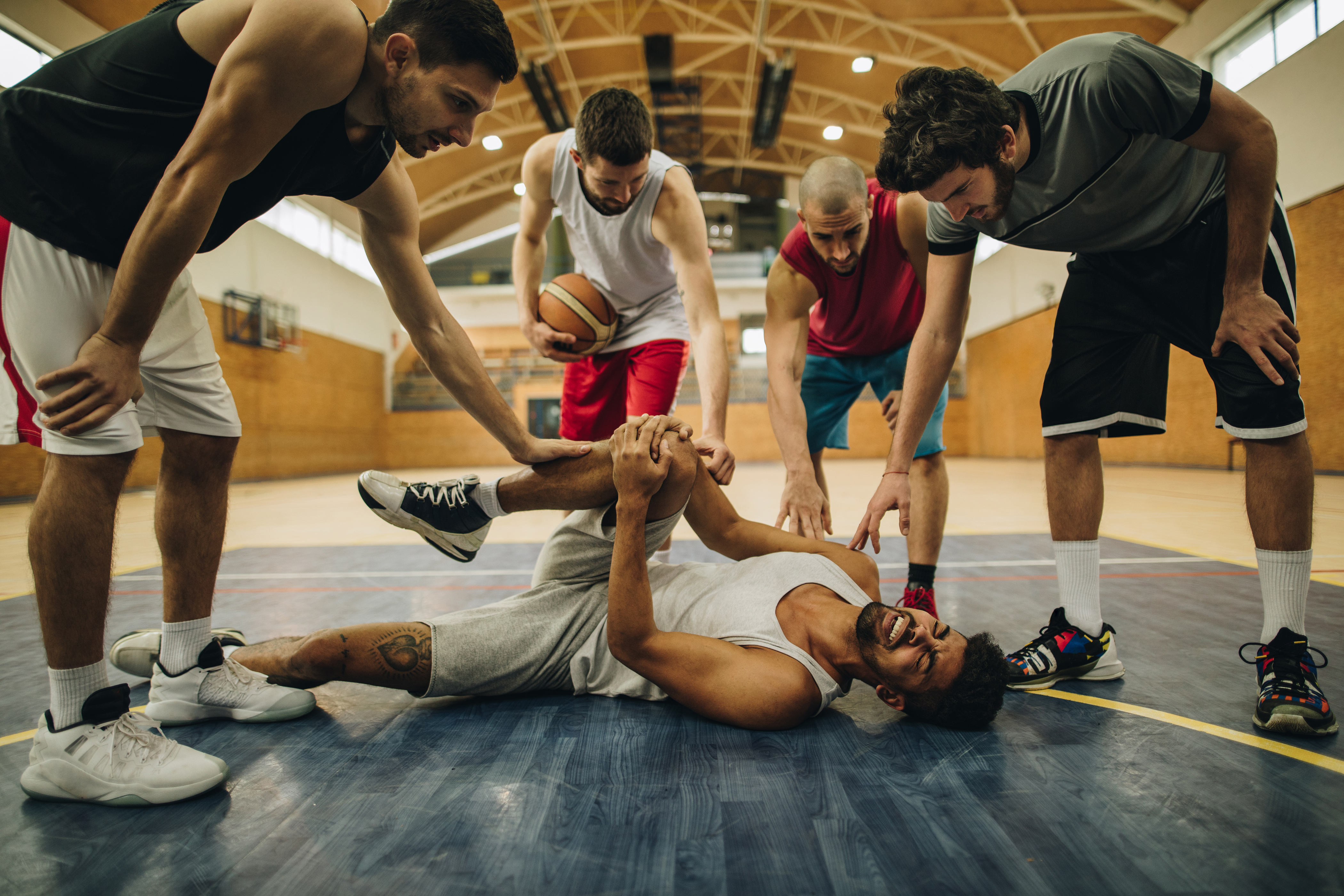Anterior cruciate ligament (ACL) tears are one of the most common knee injuries in the United States, affecting more than a quarter of a million people annually, many of them athletes.
Despite reconstructive surgery and months of rehabilitation, many individuals who rupture their ACL never fully regain the strength and flexibility they enjoyed prior to injury.
Those outcomes might improve, a new UConn study says, if clinicians take into account a patient’s emotional response to their injury, as well as their levels of pain and physical strength, as part of the rehabilitation process.
“Rehabilitation for ACL injuries has traditionally focused on improving muscle strength and getting people to come back stronger,” says Adam Lepley, the study’s principal investigator and an assistant professor-in-residence with UConn’s Department of Kinesiology. “Only, we’re starting to figure out that the strengthening exercises we’re doing now are not entirely effective.”
Individuals returning from reconstructive ACL surgery usually lose about 20 percent of their knee strength despite months of therapeutic rehabilitation. Nearly a quarter of those patients are prone to future ACL tears because of the joint damage and about half will likely experience osteoarthritis within 15 years of surgery.
“Unfortunately, we’ve had some really poor outcomes for these patients,” says Lepley, whose research focuses on neuromuscular dysfunction in acute injuries.
As a former athletic trainer with the University of Minnesota, Lepley has seen how devastating ACL injuries can be to athletes and how frustrated or dejected some can become while struggling to recover. Curious about the relationship between a patient’s emotional response to an injury and their eventual physical recovery, Lepley and several other researchers followed 20 individuals with ACL injuries across the recovery spectrum. Patients were assessed psychologically (via self-reported questionnaires) and physically (using various scientifically validated tools) from the point of injury, through reconstructive surgery, to the time when they were medically cleared to return to play.
The results, recently published in the Journal of Athletic Training, found that a patient’s emotional response to their injury does appear to have some influence on their potential recovery. Specifically, the study found that a patient’s pain level prior to surgery influenced their emotional response to the injury and later, their perceived readiness to return to activity. The researchers also found that patients’ knee pain and quadriceps strength at the time they were cleared to return to activity influenced their assessment of their knee function and readiness to return to sport.
People respond differently to ACL injuries and rehabilitation, says Lepley. Some approach their situation positively and have better outcomes than others. If a patient has a particularly negative association with their injury, helping them address those issues could be beneficial toward improving their recovery.
“The psychological component to injury has been lacking across the board in rehabilitation and especially for ACL injuries,” Lepley says. “If there is one piece I hope clinicians get out of this study, it is that there is a psychological component to these injuries that seems to be interacting with the physical side.”
Patient emotions toward their injury appear to have an effect throughout the recovery process, according to the study.
“It’s kind of a moving target,” says Lepley. “It’s showing influence presurgery, two weeks after surgery, and six months down the line. There definitely appears to be an interaction happening where the psychological and physical functions are feeding off of each other.”
The good news, Lepley says, is that the two factors most directly influencing a patient’s self-reported disability – pain and quadriceps strength – are things that can be addressed clinically.
“From a clinician’s standpoint, the neat thing here is that it gives us multiple areas in which to intervene,” Lepley says. A comprehensive approach using traditional rehabilitation that includes attention to psychological barriers may be an effective strategy for improving outcomes for ACL injuries, the study says.
“I can rehab an ankle or a knee injury and I can get athletes back to where they need to be physically,” Lepley says. “But there are certain things we, as athletic trainers and clinicians, can’t do. We are recognizing that there may be an interdisciplinary aspect to this and that collaborating with sports psychologists or other mental health care providers may be warranted for patients who are suffering psychologically due to their injury.”
The concept isn’t new. Psychological interventions have been shown to have positive effects on patients with cancer, arthritis, and lower back injuries who are dealing with pain, swelling, and nausea, Lepley says.
“If we can maximize both the physical and the psychological treatment of the patient at the same time, I believe we can have better outcomes,” says Lepley.
Joining Lepley on the study were Brian Peitrosimone, co-director of the Neuromuscular Research Laboratory at the University of North Carolina at Chapel Hill; and Marc Cormier, a sport and exercise psychologist from the University of Kentucky.



